REQUIEM FOR A LEGEND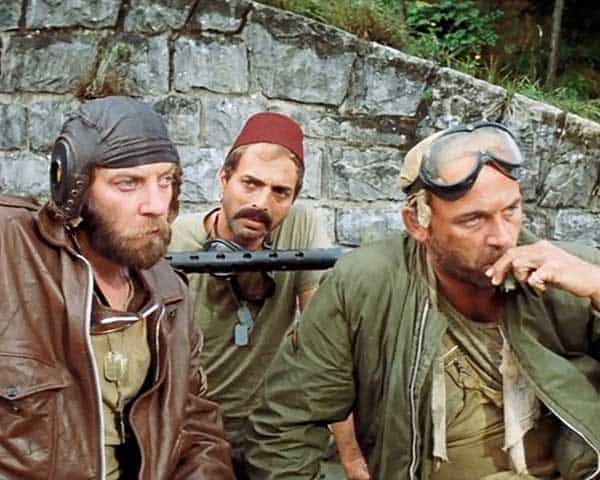
Kelly’s Heroes featured an ensemble cast of superb actors. Source: Internet Movie Stills Database
Kelly’s Heroes is one of the best movies ever filmed. Film critics will extol the many manifest virtues of such classic works as Sophie’s Choice and The Sound of Music. Forget that. Great movies shouldn’t make you sleepy, weepy, or thoughtful. Truly epic films should make you laugh uproariously or stand up in the theater and shout, “’Merica!” Kelly’s Heroes punches all the right buttons.
If you haven’t seen Kelly’s Heroes yet you need to drop what you are doing and fix that, like right now. I don’t care if you are flying an airplane, delivering a baby or being tried for embezzlement. You’ll thank me later.
Now, wasn’t that awesome? The film debuted in 1970 when antiwar sentiment in America was at its most intense. A goofy counter-culture ethos perfuses the production. The movie is at once funny, poignant, exciting and cool. What made the film work was its ensemble cast.
Details
Kelly is played by the inimitable Clint Eastwood. A former Infantry Lieutenant, Kelly lost his rank and is destined to serve out the rest of the war as an enlisted grunt. His foil is Telly Savales’ character, Big Joe. Big Joe is the company’s First Sergeant who just wants to get his guys back home safely.
The cast also includes Don Rickles as Crap Game, the conniving supply sergeant hustler; Harry Dean Stanton and Jeff Morris as the lovable rednecks; Carol O’Conner as the self-absorbed megalomaniacal American General; Gavin McLeod as the acerbic tank crewman, and many more. And then there was Donald Sutherland’s Oddball.
Donald Sutherland has played a wide variety of characters across a wildly successful acting career that spans decades. His unhinged tank commander, Oddball, eclipses them all. Oddball is equal parts cynic, lunatic and stoner. I kind of want to be Oddball when I grow up.
Kelly’s Heroes sported some epic vintage weaponry.
Story Arc
Spoiler alert — you’ve been warned. The narrative has Kelly’s armored infantry unit, the 35th ID — National Guard division drawn from Missouri, Nebraska and Kansas — getting hammered as it slogs its way across France after D-Day. Kelly and Big Joe serendipitously capture a German Colonel in Army Intelligence.
Big Joe knows they are approaching the French town of Nancy and demands that Kelly interrogate the Kraut Colonel about the best hotels, restaurants and brothels. As he does so, Kelley discovers that the German officer is carrying several gold bars. He gets the German drunk and finds that there are fourteen thousand more stored in a bank behind German lines in a French town called Clermont.
Stealing a massive pile of Nazi gold seems like the perfect crime. Big Joe is a hard sell, but Kelly’s guys eventually strike out along with Oddball’s three Sherman tanks to rob the German-held bank. There results chaos aplenty, much of it genuinely hilarious.
Packing a captured Luger in his M1916 leather holster, Oddball steals the show. We discover that his commander was previously decapitated by a German 88, but Oddball has neglected to report him dead. Instead, he just keeps his tanks out of the way while going to great lengths to make them all look battle-worn so the brass will leave them alone. The movie drips with amazing Oddball moments. However, the antics behind the camera were arguably more entertaining than what we saw in the film.
Background
Clint Eastwood agreed to do the movie because his friend Don Siegel was directing. When Siegel could not wrap Two Mules for Sister Sara in time and had to be replaced at the last minute by Brian Hutton, the ink was already dry on Eastwood’s contract. Hutton also helmed Where Eagles Dare.
Kelly’s Heroes was filmed in Yugoslavia in 1969. In the midst of filming, Eastwood read a news item reporting that Sutherland’s wife, Shirley Douglas, had been arrested for attempting to purchase hand grenades for the Black Panthers. Douglas actually tried to pay for the illicit ordnance using a personal check. When Eastwood reported this to Sutherland it was the first he had heard of it.
When he got to the part about the personal check, Eastwood supposedly laughed so hard he could no longer stand. He then wrapped his arm around his friend’s shoulders and assured him of his complete support.
Donald Sutherland and Shirley Douglas were parents to Kiefer Sutherland and his twin sister Rachel. However, they divorced the following year. Apparently using family funds to buy ordnance for terrorists was a deal breaker.
John Landis was a production assistant on the movie and developed a friendship with Sutherland. Landis admitted that he aspired to become a director himself. Sutherland promised that, should he actually someday make movies of his own, he would happily appear in them. Sutherland kept his promise and had parts in The Kentucky Fried Movie in 1977 and Animal House a year later. He also had a cameo on a billboard in The Blues Brothers in 1980. It was also while working on Kelly’s Heroes that Landis first had the idea to make An American Werewolf in London.
The incompetent artilleryman Mulligan was played to perfection by Telly Savales’ real-life brother, George. Mike Curb wrote the lyrics to the iconic theme song Burning Bridges. Curb went on to serve as Lieutenant Governor of California from 1978 through 1982. A contemporary 45-rpm record was released of Burning Bridges as sung by Clint Eastwood. Eastwood also recorded the forgettable B-side tune, Where I Loved Her, which was written by Kris Kristofferson.
The tanks in Kelly’s Heroes would warrant a column unto themselves. Oddball’s Shermans were Yugoslavian Army surplus M4A3E4’s featuring 76mm guns installed in original 75mm turrets. The three magnificent PzKpfw VI Tigers were bodged together out of Soviet T-34’s. The conversions were superb, but true tank nerds will notice that the bogeys are wrong and the turrets are a bit too far forward.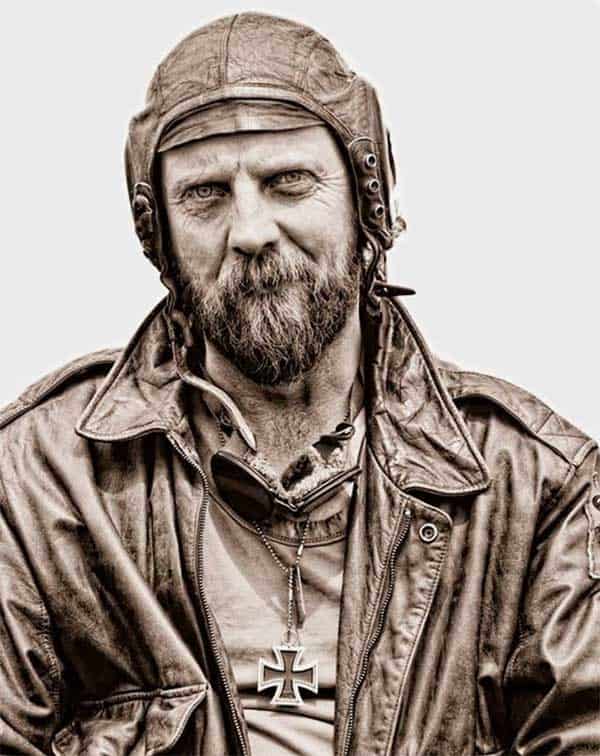
Kelly’s Heroes has become a cultural phenomenon.
This is not actually Donald Sutherland’s character Oddball.
This is a period reenactor in costume as Oddball. Wow.
Ruminations
Inspired by a true story, Kelly’s Heroes was an epic black comedy. It only returned $5.2 million against a $4 million budget but has since gained a massive cult following. For anyone interested in guns, tanks, military history or great guy movies, Kelly’s Heroes is indeed a timeless classic.
As an aside, Kelly’s Heroes is also a wealth of some remarkably quotable dialogue. Here are some of my favorite lines, “To a New Yorker like you, a hero is some kind of weird sandwich, not some nut who takes on three Tigers,” “Get the underwear off of your head, enough is enough,” and “Why don’t you knock it off with them negative waves!”
Donald Sutherland died last week at 88 after a protracted illness. During his long and successful career, he has played an astronaut, an alien-infected monster, a Roman aristocrat, a Korean War-era Army surgeon and a WWII German spy. However, Oddball eclipsed them all.


After years in the making, the National Museum of the United States Army opened its doors on Veterans Day 2020. Located in Ft. Belvoir, Va., off Liberty Drive, the museum spans 185,000 square feet and represents the effort of more than 30 different organizations led by the U.S. Army and the Army Historical Foundation.
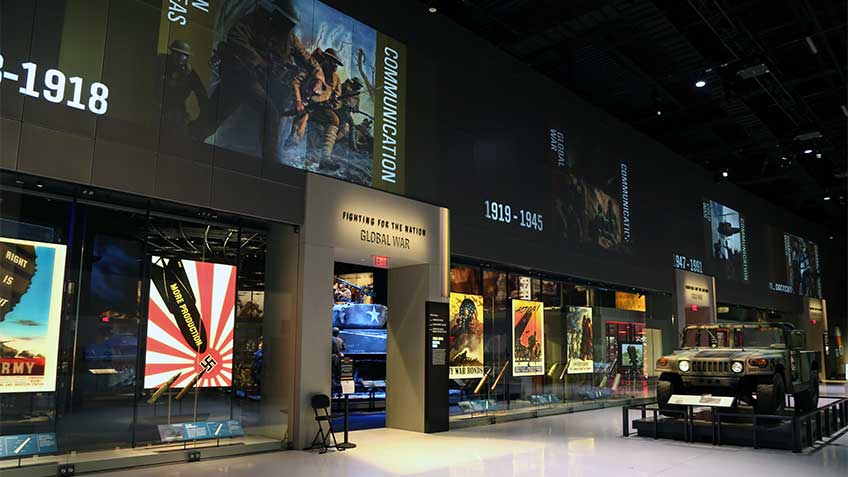
The five-story structure sits on 84 acres of ground and contains nearly 1,400 artifacts spread across 11 galleries that tell the story of the U.S. Army from its founding to its position in the modern world. The heart of the museum and where most artifacts are found lie in seven large galleries that span the history of the Army and highlight key roles it played in the development of the United States.
American Rifleman staff had a chance to view the museum during a media event a week prior to the museum opening its doors. Here are five amazing artifacts you can see when you come down to the National Museum of the United States Army:
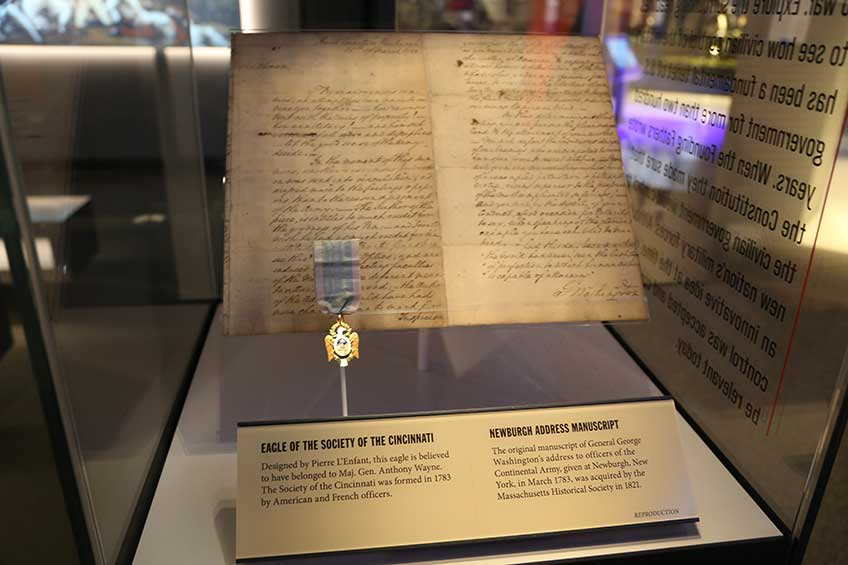
George Washington’s Newburgh Address
In March 1783, the fledgling United States faced a moment of crisis that almost ended the American experiment before it began. While the nation engaged in peace talks with Great Britain, the soldiers and officers of the Continental Army were reaching a breaking point. They hadn’t been paid in more than a year, and the promise of a lifetime pension for the officers still had no source of funding. An anonymous letter circulated the army camp in Newburgh, NY, which stirred talk of rebellion and a possible military coup against the Continental Congress.
When George Washington heard these rumblings, he knew immediate action was required. What followed on March 15 was one of Washington’s finest hours and a defining moment in the early history of the nation. Washington told his men to be patient, saying that doing so would prove their “unexampled patriotism…rising superior to the pressure of the most complicated sufferings.” After the address, Washington stirred the emotions of his men as he struggled to read a letter from Congress. After faltering, he paused and said, “Gentlemen, you will permit me to put on my spectacles, for I have not only grown gray but almost blind in the service of my country.”
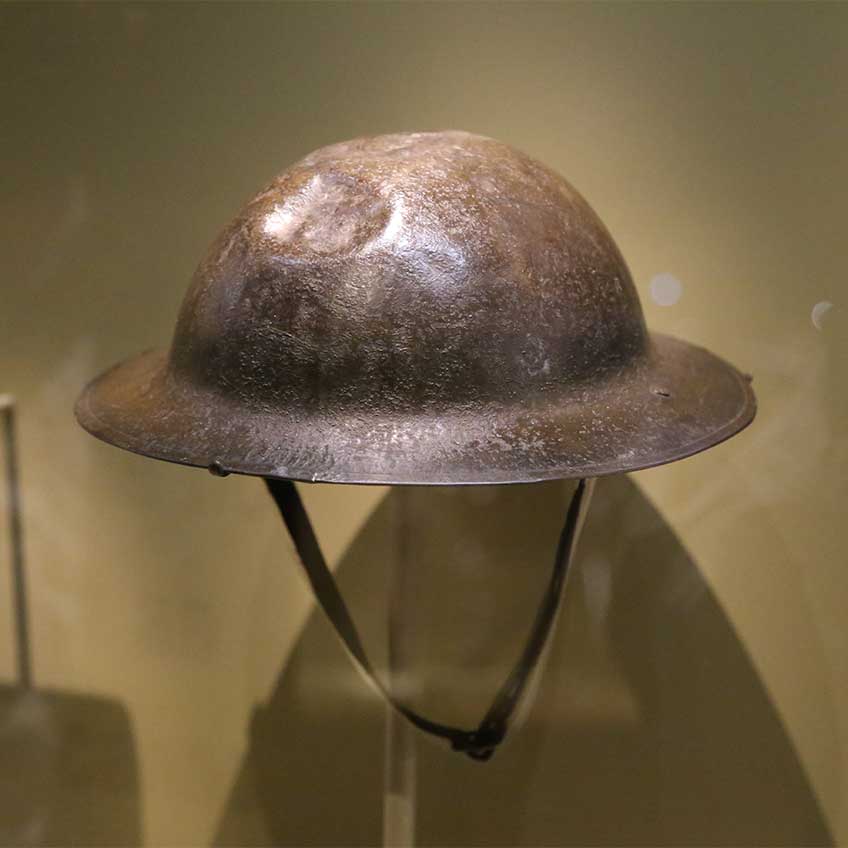
Sgt. Alvin York’s Helmet
In October 1918, then-Corporal Alvin York of the 82nd Division of the U.S. Army joined a group of American soldiers with a mission to take out a machine-gun position in the German lines during the Meuse-Argonne Offensive. While wearing the helmet pictured above, York and his men suddenly came under fire from a German machine gun while dealing with a group of captured German soldiers. To deal with this threat, York embarked on a series of incredible actions that would see him awarded the Medal of Honor.
Likely armed with an M1903 Springfield rifle, York lowered himself and began “touching off” the German machine gunners as quickly as he could. Then, six German soldiers with bayonets fixed charged York, who had expended all the rounds in his rifle. York then drew his M1911 pistol and shot each German soldier, from back to front. Ultimately, through his individual actions, York silenced all the machine-gun positions in the area and captured 132 German soldiers. French Marshal Ferdinand Foch remarked that it “was the greatest thing accomplished by any soldier in all the armies of Europe.”
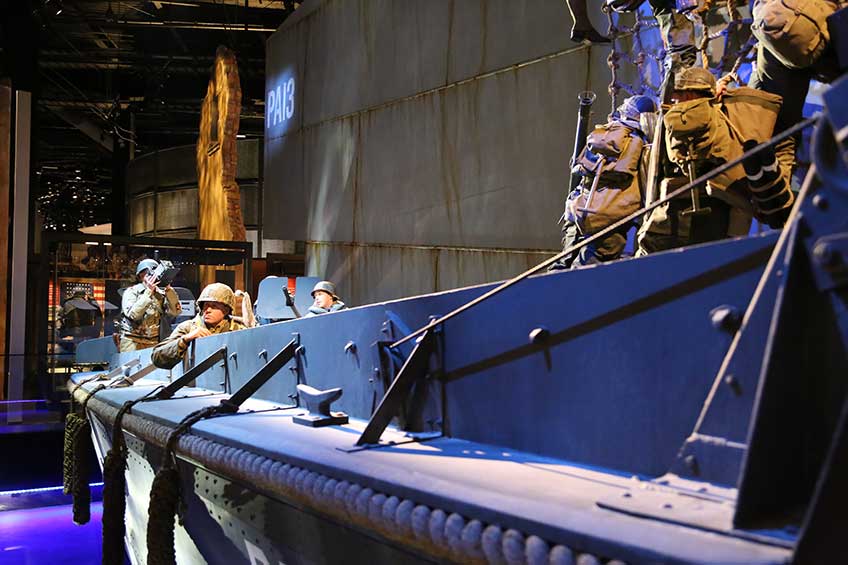
D-Day LCVP
As part of Operation Overlord, the beach landings in Normandy on June 6, 1944, represented one of the largest seaborne invasions in human history. More than 150,000 soldiers supported by nearly 200,000 naval personnel aligned themselves off the northern Channel coast with the aim of cracking Hitler’s Atlantic Wall and establishing a beachhead. The Allied invasion assembled the largest fleet of ships ever gathered.
Nearly 7,000 vessels from eight different navies made up the fleet, and 4,126 landing craft were the largest part of the assemblage, all designed to ferry fighting men from the ships to the five invasion beaches. Of these landing craft, one of the most famous is the “Landing Craft, Vehicle, Personnel” (LCVP), more popularly known as the “Higgins boat” after its designer, Andrew Higgins. More than 23,000 Higgins boats were produced during the war for use in the Atlantic and Pacific theaters. Few survive today, and even fewer are known to have been used in the Normandy landings. The Higgins boat at the National Museum of the U.S. Army is one of six known survivors from D-Day.
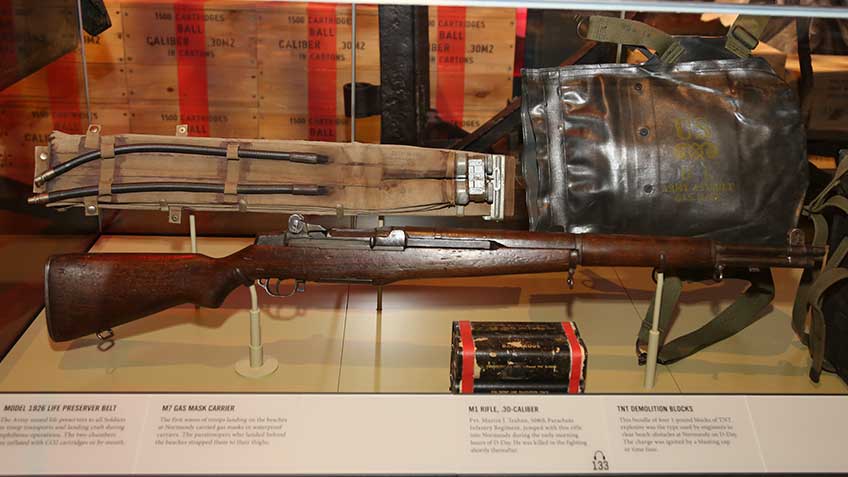
Pvt. Martin J. Teahan’s M1 Garand
At 2:15 a.m. on June 6, 1944, the 508th Parachute Infantry Regiment (PIR) of the 82nd Airborne took part in the opening phase of Operation Overlord, jumping behind German lines. The 508th PIR’s objectives were to capture the French town of Sainte-Mère-Église, secure Merderet River crossings and establish defensive positions in preparation for the Normandy landings. Among those who jumped from the skies that morning was 21-year-old Pvt. Martin J. Teahan.
He joined his comrades in the heavy fighting on D-Day, and while scouting near Picauville, France, Pvt. Teahan was shot in the leg, captured and later killed by a German soldier. Several days after the landing, a French farmer found an M1 Garand engraved with the name “M. Teahan” and held onto it for 72 years until its discovery in 2016. Pvt. Teahan is one of 9,388 American soldiers who lie in the Normandy American cemetery near Colleville-sur-Mer, France, but the rifle he fought with has an honored place in the U.S. Army’s National Museum.
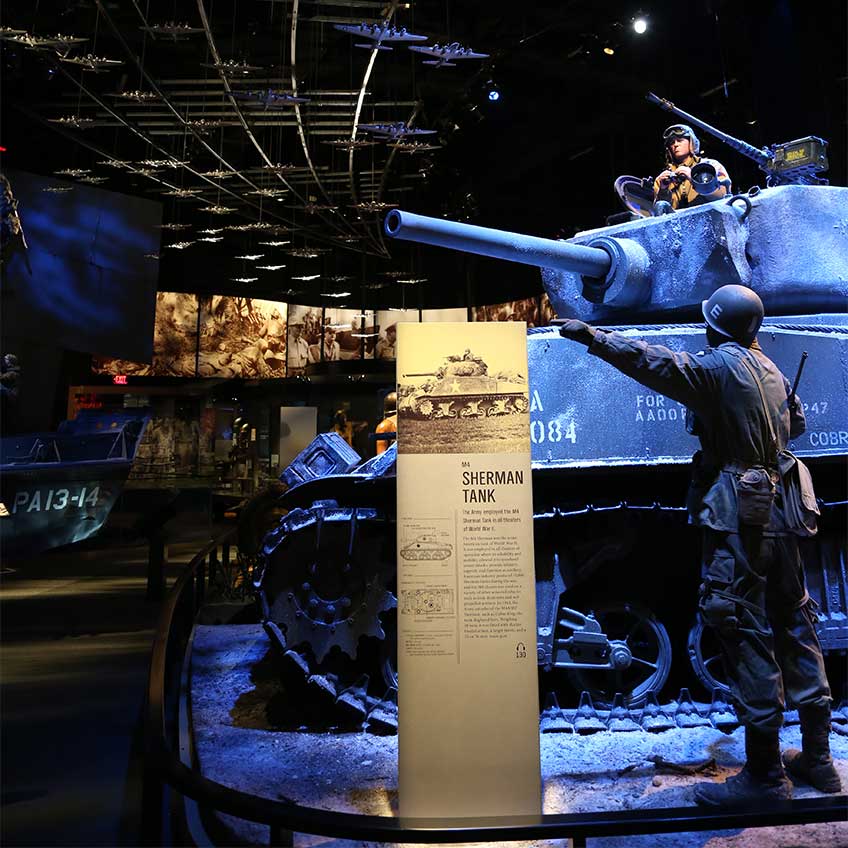
M4A3E2 Sherman “Cobra King”
During the winter of 1944, Allied armies were making significant progress against the Nazi war machine. The combined forces of the British and Americans on the Western Front of World War II had brought them nearly to the border of Germany itself. Hitler and his command staff had only enough men and materiel to mount one last offensive. Known today as the “Battle of the Bulge,” the German blow pushed through the Ardennes Forest with the aim of splitting the Allied lines. The Germans hoped this would destroy the Allied armies in northwestern France and prevent the use of the Antwerp port, forcing them into a surrender settlement.
While the German advance accomplished none of its aims, the assaulting force managed to surround the 101st Airborne in the Belgian town of Bastogne. With heavy cloud cover preventing any reliable means of air support or resupply, the men of the 101st Airborne held out against the odds during five days of heavy fighting. On Dec. 26, 1944, lead elements of the 37th Tank Battalion of the 4th Armored Division broke through German lines, effectively ending the siege of Bastogne. At the head of the column was “Cobra King,” an M4A3E2 Sherman tank that held the honor of being the first unit through the lines.
These are just five of the nearly 1,400 artifacts visitors can see in the National Museum of the U.S. Army, and there are many more priceless artifacts that tell the story of the nation through the eyes of its soldiers. From the rifles of the American Revolution to an engine recovered from one of the helicopters immortalized in “Blackhawk Down,” there’s something for everyone to see.
Museum entry is free, but timed-entry tickets are required and can be reserved on the museum’s website. The museum is open from 9 a.m. to 5 p.m. and is closed Christmas Day. Parking is free, and the museum is located 25 minutes from Ronald Reagan Washington National Airport. For more information, visit thenmusa.org.

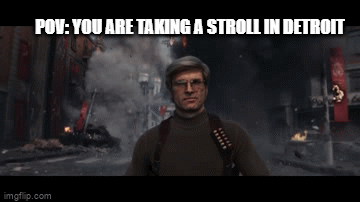

Since 1907, Camp Perry on the Ohio shores of western Lake Erie has hosted the NRA National Rifle and Pistol Matches. But few people today realize that, for several years during the mid-1940s, Camp Perry served a very different purpose. It was a prisoner-of-war (POW) camp, housing some 6,000 German and Italian prisoners in America’s heartland.
During World War II, the United States maintained 511 base camps and 175 branch camps within its borders, containing nearly 430,000 prisoners. There were more camps in the eastern half of our nation than the west, and all but three states—Nevada, Montana and North Dakota—had POW camps.
The camps were established to help alleviate the overcrowding of POWs housed in Great Britain. Had just Italian (50,273) and Japanese (3,915) POWs been shipped to the U.S., American camps could have easily handled those numbers. But when an additional 371,683 German prisoners began debarking from troop ships onto America’s shores late in the war, the POW prison system was soon overwhelmed. U.S. military leaders went scrambling to find suitable camp locations, construct facilities, train guards, interpreters and other support personnel—a monumental task.
Camp Perry was considered a major POW base camp, and had several smaller branch camps located in or near seven Ohio cities, as well as Fort Wayne, Indiana. Italian soldiers captured on European battlefields began arriving at Camp Perry in 1943, followed by German soldiers in 1944. A small portion of the Germans, an estimated 10 percent, were hardcore Nazi sympathizers. Most of those were former Rommel Afrika Korps members who still firmly believed that Germany would ultimately win the war. As a result, they often intimidated the other German prisoners who were less enthusiastic toward Nazi beliefs, through verbal and physical abuse.
The prisoners at Camp Perry were housed in small, wood-framed, tar-papered-covered buildings, groupings of which were called “hutments.” Measuring 16’X16’, each building was a single story constructed on a concrete slab, double-walled with double-pane windows, and heated by a wood-burning stove. Five prisoners were assigned per building. A nine-strand, barbed-wire fence 9 feet high, with 11 guard towers, enclosed the entire encampment.
Prisoners were required to work while at the camp, doing daily routine maintenance of the many buildings, cooking, cleaning and other chores, as needed. As a result, they earned a small number of coupons per day which they could then redeem at the prison “canteen,” what today would be known as the camp PX, or Post Exchange. Officers were exempt from working if they so chose, but many worked to help pass the time and ease the boredom of routine prison life.
An interesting aside is that the German prisoners did not think much of the American 3.2 percent alcohol beer they could purchase at the camp PX for 10 cents per bottle—it was just too bland and mild for their tastes. However, they did like the Coca-Cola that sold for four cents per bottle.
Some POWs worked offsite of Camp Perry, employed at area businesses or planting and harvesting farm crops; overseen, of course, by armed camp guards. Northwest Ohio has some of the most productive farmland in the world, but due to the ongoing war effort able-bodied American farmhands were in short supply in the 1940s. As a result, POWs were often pressed into service, and this decision was not always popular with local civilians. They claimed that POWs were filling paying jobs that should have gone to them.
There was also cultural resentment of the POWs. For instance, at one canning company German prisoners worked alongside American civilian women whose husbands and sons were fighting German forces overseas.
Another complaint heard from civilians was that prisoners were being coddled. As part of the war effort, food rationing of meats and canned goods was in effect for all Americans. Yet they saw prisoners being provided three meals each day, sometimes eating the brand-name foods citizens couldn’t readily obtain.
On the other hand, certain civilians took the food disparity issue and the fact that they had a POW camp in their backyard philosophically. A story in the October 1, 1943, Port Clinton Herald and Republican newspaper quoted an area resident as saying, “This is war, and we’ll just have to make the best of it.”
Some civilians went out of their way to interact with the prisoners, while others refused to have anything to do with them. One Ohio resident, who chose to get to know some of the men at Camp Perry, commented, “You could tell the Germans from the Italians because the Italians were laid-back and so friendly, while the Germans were stoic and stern and did not talk much, although they worked hard.”
Did any POWs ever escape from Camp Perry or any of its satellite camps? There were several attempts. In January 1945, a prison guard shot and killed a German prisoner who had threatened him. The guard lost his footing on icy ground and was rushed by the prisoner, whom he then shot. The guard underwent a court-martial for the shooting, but was found not guilty.
If a prisoner tried to escape and was caught, or purposely violated any other major rule, he was placed in solitary confinement and put on a diet of bread and water three times per day. (At the time, such treatment of prisoners was in alignment with the Geneva Convention of 1929.)
Suicides were less common than escape attempts, but a few did happen. One POW who slipped away from a work detail near Defiance, Ohio, was found a few hours later drowned in the Maumee River. Another prisoner, who had allegedly escaped from Camp Perry, was found hanging from a tree near Port Clinton about a week later. Camp officials described him as mentally imbalanced and, until his body was discovered, the only German prisoner who had successfully escaped from the camp.
May 8, 1945, V-E Day (Victory in Europe), marked the end of World War II in Europe, with Japan surrendering in the Pacific a few months later that same year. As a result, POWs held in American prison camps, including Camp Perry, began to be sent home to their native countries. Interestingly, a number of German and Italian prisoners eventually returned to America to live permanently and become citizens. Impressed by how well they had been treated as POWs, they wanted to experience the opportunities and freedoms they had seen while in America that their home countries did not offer.
Today, three-quarters of a century after the last POW marched out of Camp Perry, there is still much tangible evidence of that era remaining, thanks to ongoing historic preservation efforts. For instance, the brick buildings known as “Commercial Row” that house firearms vendor displays during the annual National Matches were once the mess halls of the POWs of World War II.
King Colts By Bart Skelton

It’s one of those prolific points of discussion when it comes to guns, one that can be very touchy with some folks, and it seems that everybody who fools with guns has an example. The ones that got away. My own cases in this unfortunate study are disheartening, and I generally attempt to avoid serious thought of them as the grieving can be embarrassing. But now and again something will trigger thoughts of a fugitive firearm that I slipped up and let go, and the pining starts, regardless.
The most recent episode involved a visit with one of my brush-beating compadres, midwestern land baron, NRA Board Member, and wildfowl conservationist Lance Olson. A renowned collector and expert in firearms, Olson frequents the Southwest and other areas of the country in search of various collectibles, occasionally permitting me to catch a glimpse–or even handle–some of his acquisitions.
During his latest sortie, I discovered Olson had landed a fine Colt Single Action Army in one of my all-time favorite calibers, .44 Special. A 1st Generation Colt, the revolver had been highly customized. Upon closer examination, it was clear the gun had been modified by late gunsmithing legend Dean King. I generally cringe at the sight of a good 1st Generation single action that’s been modified–such behavior is villainous in my book–but I do find modifications by King to be much less offensive.
Olson’s revolver was a 4¾-inch single action with original Colt hard rubber grips featuring the famous eagle. The finish was of bright blue, no casecolors. The barrel had been fitted with a ventilated rib, which ran from the front of the gun’s frame to the end of the barrel, one of King’s signatures.
The revolver’s sights were another King touch. Gunsmith King invented the famous mirror front sight, which was basically a ramped sight with the blade set high. The ramp featured a small, round mirror that had been inset into the top of the ramp in front of the sight blade at an angle. This permitted available light to be reflected directly upon the front sight for maximum clarity. The rear sight was fully adjustable and looked similar to a Smith & Wesson rear sight.
It was after World War I when Mr. King began his famous gunsmithing work. Back then nobody really thought twice about wrecking the value of a Colt Single Action Army, heck they were still in production. King’s modifications were executed tastefully and really enhanced the shootability of a handgun. While most of these modifications were done on Colts, Mr. King experimented with other firearms as well.
As I looked over Monsieur Olson’s King Colt, it brought back memories of a couple of guns that I’d let get away from me, including one of my dad’s personal favorite revolvers. Dad had a respectable compilation of firearms, though he never considered himself a real collector.
He had a number of favorites that remained constant; otherwise he never felt much emotion about trading anything off. One of the main handguns always by his bedside was a Colt SAA 1st Generation in .45 Colt. The revolver had been customized to his personal specifications and was a finely timed piece of work. The action was silky smooth, and the trigger pull was one of the lightest I’d ever felt on a revolver.
While the Colt had no ventilated rib, it was fitted with a King mirror front sight, and the rear sight was what I always thought was a Smith & Wesson adjustable but could have likely been a King as well, though I never thought to ask. The revolver’s backstrap had the bluing polished away to natural steel and was finished off with a beautiful set of Herrett’s French Walnut grips. In all, it was a fine sixgun–one I should have figured out how to have kept after my dad’s untimely passing.
As luck would have it, I was contacted by an old friend of our family’s a few years back, one Mrs. Bennie Dean. Her late husband, Tom, had been a dear friend of my dad’s; they had worked together as U.S. Customs Investigators in South Texas in the late 1960s. Tom was a shooter and gun enthusiast, and he had told my dad that he had always wanted a Colt Bisley. He, too, admired King’s stuff and was fond of Dad’s single action .45. The old man scrounged up a Bisley–they weren’t too hard to come by back then at a decent price–and went to work on a custom sixgun for Tom.
Upon getting in touch with me, Mrs. Dean advised that she had something of Tom’s that I needed. This gracious lady and I struck a deal, and I walked away with that Bisley. The old shooter was marked Colt Single Action Army .45 Colt, yet it had been converted to shoot .45 ACP. The front sight was a ramped and mirrored King with the adjustable rear sight. I’ve always been fond of the Bisley, and I found the gun to be a real prize. Shortly after acquiring the old beauty, I entered in a cowboy action shoot down in the Texas Big Bend and placed decently using the old hogleg. It is definitely one revolver that I’ll not let get away, and while it’s not my dad’s old .45, it’s almost as good.
My gun-trading skills have always been mediocre at best, and Lance Olson knows it, which is likely why he allows me to peruse his trappings. During his last raid, not only was he in possession of the Colt single action, he also produced a fine little Colt Pre-Woodsman .22. Upon examining it, I noticed the adjustable sights were made by King. The front sight wasn’t the mirrored variety; it was the shadow model, which is almost as good. This sight was slightly undercut towards the muzzle, again to maximize the clarity of the sight blade.
Incredibly, that little Colt is now resting in my gun safe, where I intend for it to stay, along with the King Bisley. Next time you happen across an old revolver that’s been modified a bit, be sure to give it a once-over. If it has a King marking, it’s liable to be a keeper.